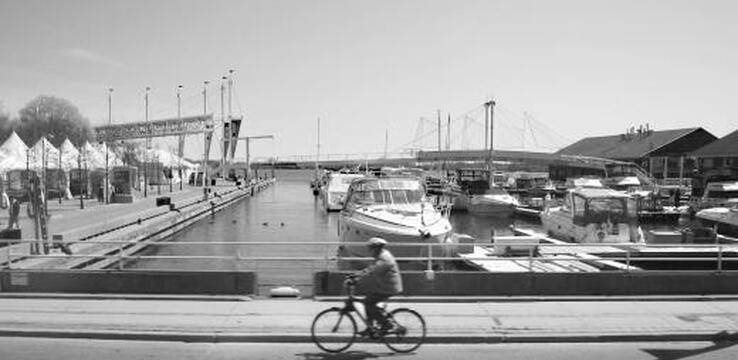San Francisco and Toronto share a similar challenge on their waterfronts: how to transition from historic maritime industries toward a diverse mix of uses, and stave off creeping disrepair. Toronto is well on its way toward meeting its challenge, and San Francisco can take important lessons from the way that city looked beyond its own borders for solutions.
Toronto, a city of more than 2.5 million citizens is on the north shore of Lake Ontario. Traditionally, Toronto’s harbor was an industrial area, home to many manufacturing companies. But by 1970, the city’s economic base changed, and a majority of these companies relocated to suburban areas outside of Toronto or in other countries. Early attempts to develop waterfront projects such as Harbourfront created new residential neighbors but failed to reconnect the city with the lake. Not satisfied with these results, the city created a new plan for waterfront development along Lake Ontario.
The plan adopted in 1998 called for a mixed-use development of residential, retail and office spaces, as well as 740 acres of parks and open space. Recognizing that the success of the plan hinged on the direct involvement of not only the city, but also the province of Ontario and the national government, the city formed Waterfront Toronto, a corporation composed of all three levels of government. The corporation has the power to oversee waterfront development including land use, design and disposition. After gathering the opinions of residents, businesses and organizations interested in the plan, Waterfront Toronto developed an implementation strategy under which all publicly owned waterfront land scheduled for development was transferred to Waterfront Toronto.
The province and the federal government understood the economic challenges of converting industrial land to new uses such as retail, residential and office, and agreed to become financial partners. Waterfront Toronto was given a commitment of $1.5 billion over 25 years to stimulate development and implement the plan. The funds are being used to pay for services and improvements such as design, environmental cleanup, infrastructure, and public parks and open space.
Like Toronto, San Francisco faces challenges in the development of its waterfront. In 1969, Bayfront lands were transferred from the State of California to the newly created Port of San Francisco. The Port is an enterprise agency of the City & County of San Francisco, which means that the Port’s operating and capital budgets are generated entirely from its revenue, primarily from leasing property. Unlike the situation in Toronto, traditionally the Port has not received funding from the federal government, the State of California or San Francisco’s General Fund, yet so much of the waterfront requires repairs that the Port may not have the resources to complete the task on its own.
In August 2007, the Urbanist focused on the condition of the San Francisco waterfront. It asked the question, “Can the waterfront be saved?” and assessed the financial and physical condition of the Port. SPUR determined that even with the success of developments such as the Giants ballpark and the Ferry Building historic renovation, significant challenges to the redevelopment of the waterfront remain. The Port’s first 10-year Capital Plan, published in 2006, identified a cost of more than $1.5 billion to make basic repairs to the nearly 19 million square feet of Port property. Yet more than two-thirds of the Capital Plan is unfunded. It is little wonder, then that one of SPUR’s recommendations was that both the state and federal governments become more active participants in the planning and funding of the waterfront.
The Port has sought assistance on other fronts as well. On the recommendation of SPUR, the Port is pursuing legislation that would allow it to capture the state’s portion of tax increment funds generated when infrastructure-financing districts are formed. Recently, the federal government approved a $2.4 million grant to the Port through the Department of Defense for the environmental investigation and cleanup of Pier 70. In February 2008, San Francisco voters approved a parks bond that will provide $33.5 million to the Port to build new waterfront parks and open space.
This is a good beginning; but much more is needed. Like the City of Toronto, San Francisco needs a long-term partnership with its state and federal governments to realize its vision for a new waterfront.
